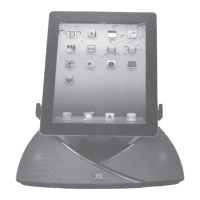2
IMPORTANT SAFETY INSTRUCTIONS
Please
read
the
following
precautions
before
use:
K'/////////////////////////////////////////////////////////////////////////////////////////////////////////////////////////////////////////////////////////////////////////////~
~ ~
~ ~
~
1.
Read
instructions.
12.
Use
only
with
the
cart,
stand,
tripod,
bracket
or
table
~
~
specified
by
the
manufacturer
or
sold
with
the
apparatus.
~
~
2.
ns.
When
a
cart
is
used,
use
caution
when
moving
the
cart/
~
~
3
apparatus
combination
to
avoid
injury
from
tip-over.
~
~
.
~
~
Unplug
apparatus
during
linhtning
storms
or
when
~
~
4.
Follow
all
instructions.
•1:1
~
~
unused
g
periods
of
time.
~
~
5.
Do
not
use
this
apparatus
near
water.
~
~
14.
Refer
all
se
el.
Servicing
~
~
6.
Clean
only
with
a
dry
cloth.
ls
required
when
the
apparatus
has
been
damaged
in
any
~
~
way,
such
as
power
supply
cord
or
plug
is
damaged,
liquid
~
~
7.
Do
not
block
any
ventilation
openings.
Install
in
has
been
spilled
or
objects
have
fallen
into
the
apparatus,
~
~
accordance
with
the
manufacturer's
instructions.
the
apparatus
has
to
rain
or
moisture,
does
~
~
8.
Do
not
Install
near
any
heat
sources
such
as
radiators,
not
operate
normall
een
dropped.
~
~
heat
registers.
stoves
or
other
apparatus
Oncludlng
15.
Do
not
expose
this
apparatus
to
dripping
or
splashing
and
~
~
amplifiers)
that
produce
heat
ensure
that
no
objects
filled
with
liquids,
such
as
vases,
are
~
~
9.
Do
not
defeat
the
safety
purpose
of
the
pol
placed
on
the
apparatus.
~
~
grounding-type
plug.
A
polarized
plug
16.
To
completely
disconnect
this
apparatus
from
the
AC
~
~
with
one
wider
than
the
other.
A
groun
Mains,
dtsconnect
the
power
supply
cord
plug
from
the
~
~
has
two
blades
and
a
third
grounding
pr
wide
AC
receptacle.
~
~
blade
or
the
third
prong
is
provided
for
yo(Jr
safety.
If
~
~
the
provided
plug
does
not
fit
into
your
outlet,
consult
17.
The
mains
plug
of
the
power
supply
cord
shall
remain
~
~
an
electrician
for
replacement
of
the
obsolete
outlet.
readily
operable.
~
~ ~
~
10.
Protect
the
power
cord
from
being
walked
on
or
18.
Do
not
expose
batteries
to
excessive
heat
such
as
sunshine,
~
~
pinched,
particularly
at
plugs,
convenience
receptacles
fire
or
the
like.
~
~
and
the
point
where
they
exit
from
the
apparatus.
~
~ ~
~
11.
Only
use
attachments/accessories
specified
by
the
~
~
manufacturer.
~
~
~
~ ~
~ ~
~////////////////////////////////////////////////////////////////////////////////////////////////////////////////////////////////////////////////////////////////////////////)!~
THE
LIGHTNING
FLASH
WITH
AN
ARROWHEAD
SYMBOL,
WITHIN
AN
EQUILATERAL
TRIANGLE,
IS
INTENDED
TO
ALERT
THE
USER
TO
THE
PRESENCE
OF
UNINSULATED
"DANGEROUS
VOLTAGE"
WITHIN
THE
PRODUCT'S
ENCLOSURE
THAT
MAY
BE
OF
SUFFICIENT
MAGNITUDE
TO
CONSTITUTE
A
RISK
OF
ELECTRIC
SHOCK
TO
PERSONS.
CAUTION
RISK
OF
ELECTRIC
SHOCK
·
DO NOT OPEN
WARNING:
TO
REDUCE
THE
RISK
OF
FIRE
OR
ELECTRIC
SHOCK,
DO
NOT
EXPOSE
THIS
APPARATUS
TO
RAIN
OR
MOISTURE.
SEE
MARKING
ON
BACK
OF
PRODUCT.
A
THE
EXCLAMATION
POINT
WITHIN
AN
EQUILATERAL
TRIANGLE
IS
INTENDED
TO
ALERT
THE
USER
TO
THE
PRESENCE
OF
IMPORTANT
OPERATING
AND
MAINTENANCE
SERVICING
INSTRUCTIONS
IN
THE
LITERATURE
ACCOMPANYING
THE
PRODUCT.
FCC
Statement
and
Warning
This
equipment
has
been
tested
and
found
to
comply
with
the
limits
for
a
class
B
digital
device,
pursuant
to
part
15
of
the
FCC
rules.
These
limits
are
designed
to
provide
reasonable
protection
against
harmful
interference
in
a
residential
installation.
This
equipment
generates,
uses
and
can
radiate
radio
frequency
energy
and,
if
not
installed
and
used
in
accordance
with
the
instructions,
may
cause
harmful
interference
to
radio
communications.
However,
there
is
no
guarantee
that
interference
will
not
occur
in
a
particular
installation.
If
this
equipment
does
cause
harmful
interference
to
radio
or
television
reception,
which
can
be
determined
by
turning
the
equipment
off
and
on,
the
user
is
encouraged
to
try
to
correct
the
interference
by
one
or
more
of
the
following
measures:
• Reorient or relocate the receiving antenna.
• Increase the separation between the equipment and
receiver.
• Connect the equipment into
an
outlet
on
a circuit different from that to which the receiver
is
connected.
• Consult the dealer or
an
experienced radio!TV technician for
help.
FCC
Caution
Any
changes
or
modifications
not
expressly
approved
by
the
party
responsible
for
compliance
could
void
the
user's
authority
to
operate
this
equipment.
This
device
complies
with
Part
15
of
the
FCC
Rules.
Operation
is
subject
to
the
following
two
conditions:
(1)
This
device
may
not
cause
harmful
interference,
and
(2)
this
device
must
accept
any
interference
received,
including
interference
that
may
cause
undesired
operation.
MODIFICATIONS
NOT
EXPRESSLY
APPROVED
BY
THE
MANUFACTURER
COULD
VOID
THE
USER
AUTHORITY
TO
OPERATE
THE
EQUIPMENT
UNDER
FCC
RULES.
IC
Statement
and
Warning
This
Class
B
digital
apparatus
complies
with
Canadian
ICES-003.
Cet
appareil
numerique
de
Ia
classe
Best
conforme
a
Ia
norme
NMB-003
du
Canada.
FCC/IC
Radiation
Exposure
Statement
This
equipment
complies
with
FCC/IC
RSS-1
02
radiation
exposure
limits
set
forth
for
an
uncontrolled
environment.
This
equipment
should
be
installed
and
operated
with
minimum
distance
of
8"
(20cm)
between
the
radiator
and
your
body.
Battery
Disposal
CAUTION: RISK OF EXPLOSION IF THE REMOTE CONTROL BATTERY IS REPLACED
BY
AN
INCORRECT TYPE. DISPOSE OF USED BATTERIES ACCORDING TO THESE
INSTRUCTIONS.
Rechargeable batteries
(i.e.,
nickel cadmium, nickel metal-hydride, lithium and lithium-ion) are
hazardous
household materials and may pose
an
unnecessary health and safety risk.
In
the European Union and other locations,
it
is
illegal to dispose of any battery with household
trash.
All
batteries must be disposed of
in
an
environmentally sound manner. Contact your local
waste-management officials for information regarding the environmentally sound collection,
recycling
and disposal of used batteries.

